Combat ships. Cruisers. Shot damn thing that didn't come out lumpy
Yes, sometimes the path of a ship is similar to that of a man. To be the firstborn in a huge family, to nurture the younger ones, to go through the entire war from the first to the last day, survive burning in atomic fire, and then be shot in gratitude.
All this is not about a cruiser, but about Pensacola-class cruisers. First American "Washington" class cruisers.
In fact, if in theory, these ships were supposed to become some kind of pioneers in the class of heavy cruisers, play the role of training ships, that is, no one took them seriously. But it turned out completely differently.
It all started long ago. The year is 1922, the same Washington Agreement, which was not remembered for the night, which, on the one hand, seemed to have reduced the intensity of the battleship race, on the other, a total headache began in terms of cruisers around the world.
All over the world, where there were decent fleets. And the main role here was played by the British, who, well, simply did not want to let their Hawkins (not so-so ships, but these are the British), and therefore they dragged their standards, from which now everyone had to start.
The United States faced a difficult choice: Great Britain, which still ruled the seas, could instantly move from the category of allies to the category of opponents, and not potential ones. And also on the horizon loomed Japan, which, as it were, remained extremely unhappy with the outcome of the First World War and was developing its own fleet with might and main.
And the Hawkins imposed as a standard did not suit the Americans very much. It has already become clear that 10 tons will not fit normal armor and normal armament from 000-mm guns.
So the cruising race began. And in the United States began to develop new ships, which were to make the Hawkins in the Atlantic and the Japanese Furutaki in the Pacific.
By the way, the problem was quite big. Two oceans without a network of intermediate bases (like the British) - this is not for you to gurgle in the Mediterranean Sea.
Gradually, the ideas were shaped into something tangible, and the output was a project of a cruiser with a displacement of 10 thousand tons with about 1000 tons of armor, with ten 203-mm guns and a speed of about 31 knots.
The armor, of course, was not enough. She still protected from a 152-mm projectile, but 203-mm classmates began to pierce already from 120 cables into the armor belt.
Nevertheless, it was necessary to start somewhere, and the Americans built two cruisers, Pensacola and Salt Lake City.
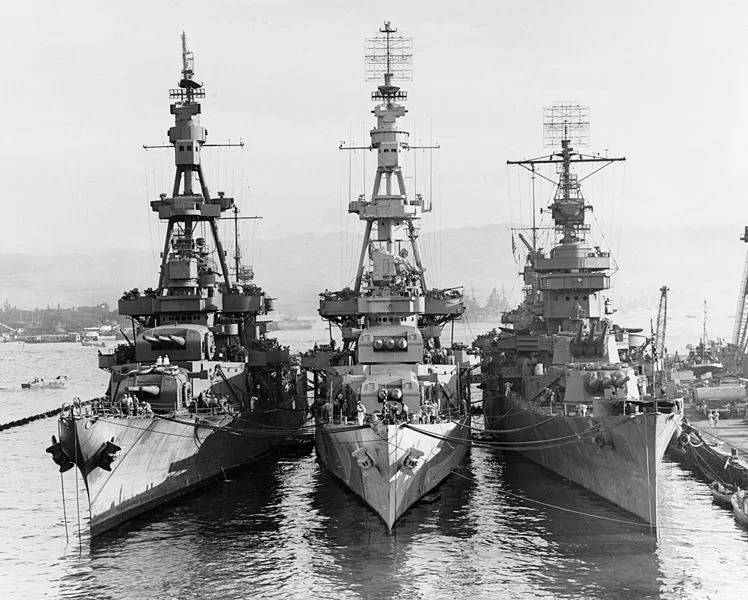
The project turned out to be quite nice, but not devoid of flaws. They turned out to be fast ships, with very decent armament, with just excellent autonomy. But I had to pay for this by booking, which in fact did not exist.
The American naval commanders were repelled by the plan that long-range 203-mm guns with good ballistics and accuracy would be able to cope with enemy destroyers and light cruisers, and ships could simply escape from battleships and battle cruisers due to their good speed.
Pensacola was laid down on October 27, 1926, launched on April 25, 1929, and entered service on February 6, 1930.
Salt Lake City was laid down on June 9, 1927, launched on January 23, 1929, and entered service on December 11, 1929.
Displacement.
The ships actually did not differ in displacement. Pensacola had a standard 9 tons and a full 100 tons. Salt Lake City - standard 12 tons, full - 050 tons.
Physical dimensions.
Length 178,5 m.Breadth 19,8 m. Draft 5,9 m.
Booking:
- belt - 63,5 ... 102 mm;
- traverse - 63,5 ... 25 mm;
- deck - 45 ... 25 mm;
- towers - 63,5 ... 19 mm;
- barbets - 19 mm;
- cutting - 32 mm.
We can say - at the level of Italian cruisers. If the American battleships were booked on the principle of "all or nothing", then there is "or nothing" in all its glory.
Engines. 8 White-Forster boilers, 4 Parsons steam turbines, 107 HP from. Speed 000 knots (shown by Salt Lake City). Cruising range 32,5 nautical miles (cruising at 10 knots).
Armament.
It worked out here from the heart. The main caliber was ten 203-mm guns, which were housed in two two-gun and two three-gun turrets. Very original, the British battleship scheme is the opposite: the three-gun turrets were installed higher than the two-gun turrets, because the hefty barbet of the three-gun turret could not fit into the sharp nose of the cruiser.
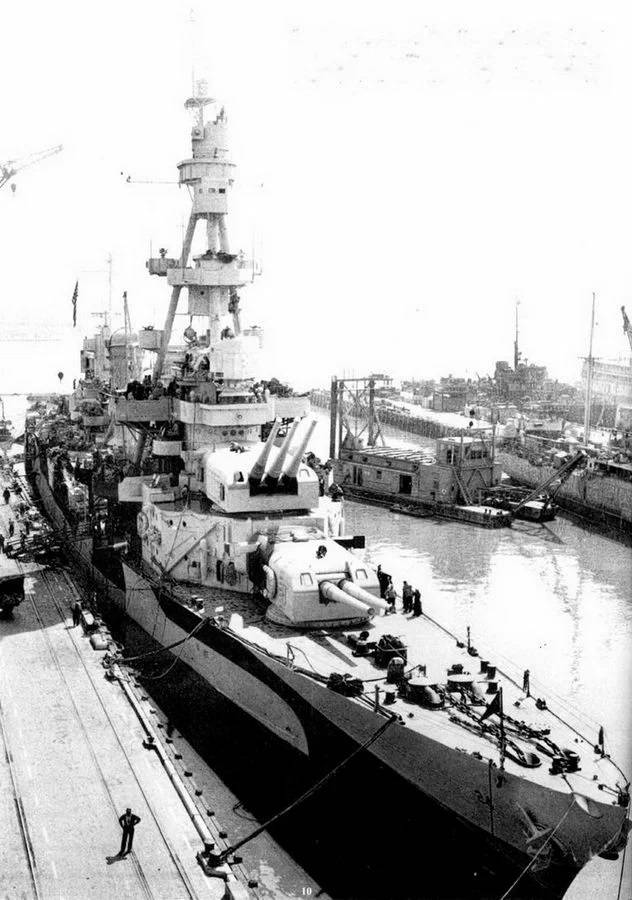
This placement provided both good aiming angles and range. When the trunks were raised by 41 degrees, the shells flew as much as 159 cables, that is, at 29,5 km. It is very doubtful that the cruiser would have fired at such a distance, but there was an opportunity.
A shell weighing 118 kg flew out of the barrel with an initial speed of 853 m / s, that is, pretty good by world standards.
In terms of the main caliber, the Pensacola immediately overtook the Hawkins by three corps, which, in the most successful scenario, could only use 6 of its main caliber 190mm guns. Against an onboard volley of ten 203-mm Pensacola guns - this does not look very good even in theory.
Secondary caliber.
Here, too, it was better than the same British or Japanese. We don't even try to compare with the French and Italians, because initially, according to the project, each cruiser was supposed to carry 4 Mark 10 Mod.2 guns with a caliber of 127 mm, but the American admirals who went into a rage demanded to increase the number of station wagons to 8 pieces. Four guns on each side in single mounts.
This is practically the same weapon that was used on destroyers. fleet USA, that is, it was distinguished by a high rate of fire (up to 15 rounds per minute) and a good range (up to 25 km). This weapon was generally considered the best universal weapon of the Second World War.
Light anti-aircraft weapons.
The cruiser's light anti-aircraft armament originally consisted of only eight 12,7 mm Browning machine guns. And then the paranoia of American admirals before aviation played a very significant role. The ships began to re-equip precisely in terms of air defense, which came in handy later, when the aviation really showed who was the boss at sea.
First, the machine guns were replaced with two Chicago Piano installations. The 28 mm quad automatic cannons developed by the US Navy's Bureau of Armaments were, of course, better than machine guns, but they were used very limitedly throughout the war due to their low rate of fire (up to 90 rounds per minute) and terrifying reliability.
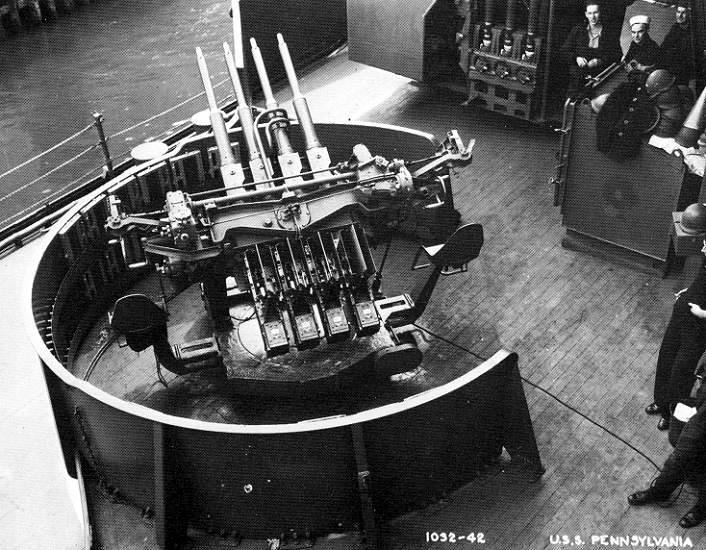
Nevertheless, in November 1941, the machine guns were removed on the cruisers and two quadruple 28-mm nightmares and eight single-barreled 20-mm anti-aircraft guns were installed. The naval crews howled with happiness and were heard: in the same year, the 28-mm mounts were replaced with quad 40-mm anti-aircraft mounts from Bofors, and the number of 20-mm machine guns was increased to twelve.
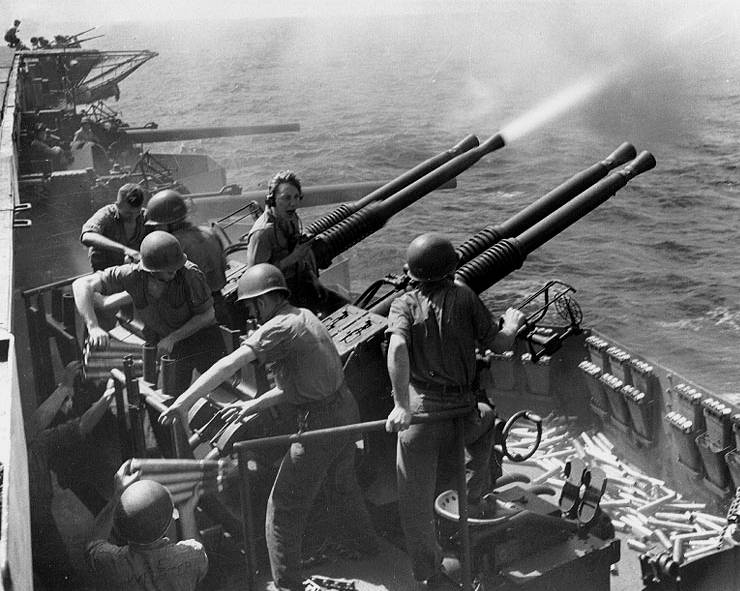
In total, at the beginning of the main naval battles, the Pensacola had 8 40-mm barrels and 12 20-mm barrels. It's better than anyone else in the world. For a start - just amazing.
By 1944, the number of quad 40-mm mounts on each cruiser had increased to six, and 20-mm assault rifles to 20. In the summer of 1945, during modernization, another four-barreled 40-mm mount was added.
Thus, the end of the war, the cruiser was met with 28 40 mm barrels and 20 20 mm barrels on the sides. This is a very serious indicator.
Yes, the artillery also included two 47-mm Hotchkiss cannons for salutes. It was possible to shoot a careless battalion or cook from them.
Mine torpedo armament.
Everything is very simple: two 533-mm three-tube torpedo tubes, which were located inside the hull, one on each side. Because of this, the vehicles had rather limited angles for launching torpedoes, 60 degrees towards the stern and towards the bow of the ship.
I must say that torpedo tubes did not serve as decoration for ships for a long time, because the American command radically revised the tactics of using torpedoes and the cruisers parted (without much regret) with this type of weapon already in 1936.
The Pensacols could have laid mines. Each cruiser was equipped with six rail tracks for installing mines (three on each side), designed for 178 minutes. The two outermost tracks were used only for storing mines, and the four inner tracks were used for both storage and installation.
But since the concept of using cruisers by the American fleet did not imply frequent laying of mines by heavy cruisers, mines and mine rails were stored on the shore, in warehouses, and had to be installed immediately before setting.
However, there is no information about mine laying performed by "Pensacol".
Aviation group.
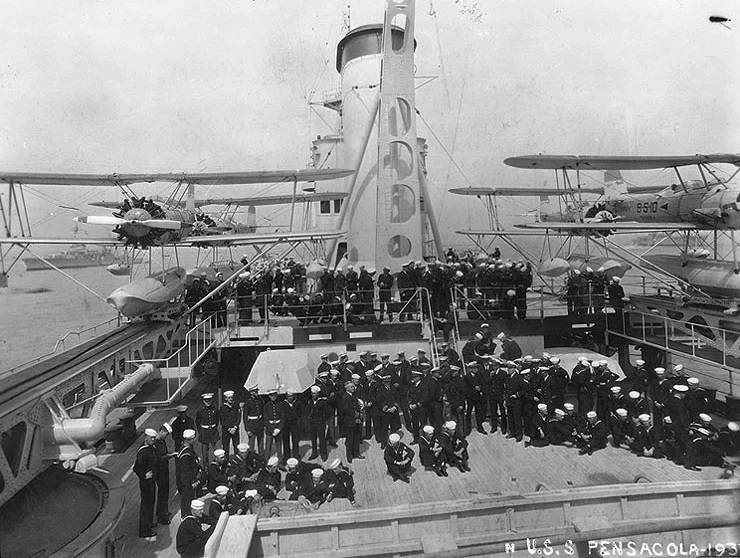
Everything was beautiful here: two powder catapults and four seaplanes. There were no hangars, so two planes were always on catapults, and two on the deck near the superstructure. At first they were the O3U "Corsair" from the "Vout" company, rather old (born in 1926) biplanes with the ability to change floats to a wheeled chassis, which were eventually replaced by OS2U "Kingfisher".
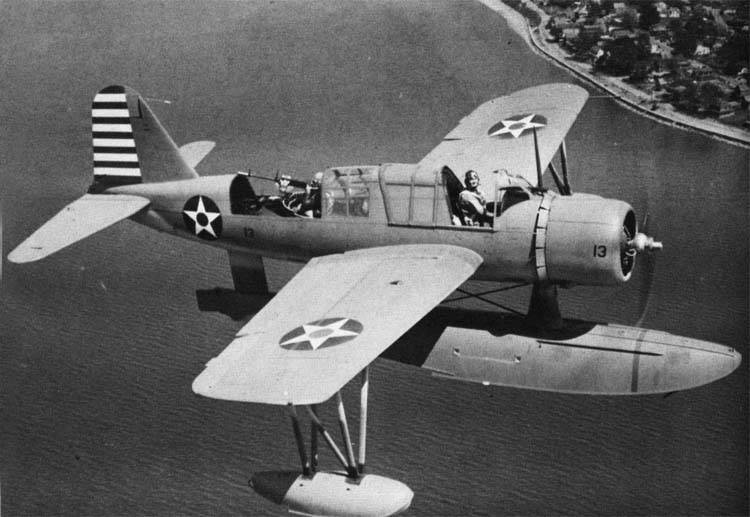
"Kingfisher" also did not shine, having a speed of only 264 km / h, and the armament of two 7,62-mm machine guns did not make him a serious fighter, even theoretically. But a very good flight range of 1 km and the ability to take up to 296 kg of bombs made him a good reconnaissance spotter, and as an anti-submarine defense aircraft, "Kingfisher" was quite.
They say that the pilots of the Kingfishers from the Pensacola wing even shot down a Japanese fighter ... Well, it is written in stories cruisers.
At the end of 1943, one catapult from each cruiser was dismantled, respectively, and the number of aircraft was reduced to two. And in 1945, all aviation equipment was removed.
In 1940, an experimental CXAM radar was installed on Pensacola. During the war, both ships received an FC artillery fire control radar, an SK search radar and two SG anti-aircraft fire control radars.
The wartime crew consisted of 1054 people.
An interesting point: the Pensacola-class cruisers were the last American ships with outboard bunks. On ships that were designed later, stationary bunks were placed. But the Pensacola was sheathed from the inside with cork sheets in the old fashioned way, so in terms of sound insulation and temperature for the crew of the cruiser they were very comfortable ships.
Combat service.
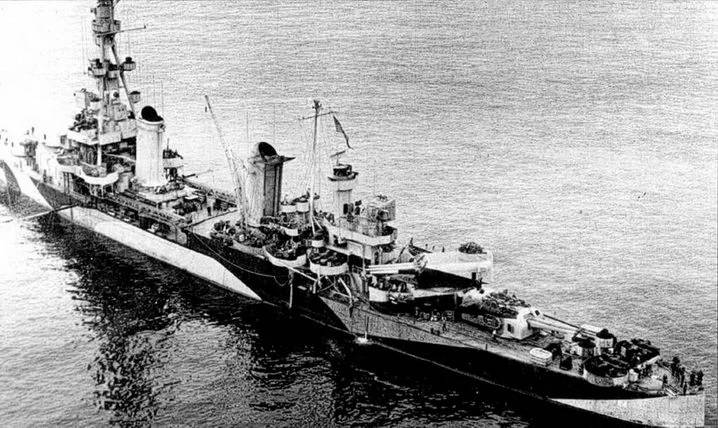
Since the ships were the first "Washingtonians", their command did not consider them seriously, so the "Pensacolam" was prepared for the role of combat training ships. The main task was the training of the crews, in particular the training of officers for service on heavy cruisers. Therefore, at the beginning of the service, the cruisers did not leave long voyages.
After the outbreak of World War II, in October 1939, the Pensacola was transferred to Pearl Harbor, where she continued to make training trips across that part of the Pacific Ocean.
The combat ship officially became in January 1941. And from December 1941 - completely combat, since the United States entered the war in full.
The training trips actually saved the Pensacola, because when the Japanese aircraft were smashing Pearl Harbor, the cruiser was on another trip to Manila. Lucky. Further "Pensacola" participated in an unsuccessful raid on Wake Island, and then was assigned to the escort group of the aircraft carrier "Lexington".
As part of this group, the cruiser first came into contact with the aircraft of the Japanese Navy. The cruiser's artillery helped repel a raid of two waves of bombers near Bougainville Island. 17 Japanese aircraft were shot down by Lexington aircraft and air defense ships.
Then the cruiser was transferred to the escort group of the aircraft carrier "Yorktown". In general, it can be said that the ship's air defense artillery was sufficient to resist Japanese aircraft.
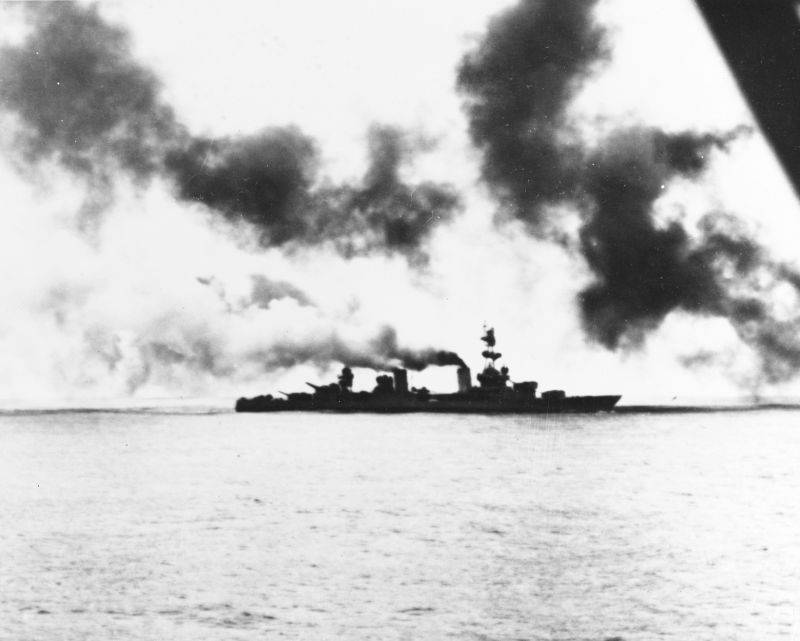
Pensacola took part in the Battle of Midway Atoll. In that battle, the cruiser first covered the Enterprise, and then was transferred to the aid of the Yorktown. The Pensacola gunners shot down 4 Japanese planes during the second raid on the aircraft carrier, but Yorktown did not save it. The Pensacola returned to the Enterprise and the Yorktown sank.
In general, such a use of a heavy cruiser was not entirely clever and justified. The effectiveness of the Pensacola's air defense, of course, was higher than that of the destroyer, as well as survivability, but still, the role of a heavy cruiser in battle should be somewhat different than protection from aircraft. Especially if this is not a specialized air defense cruiser.
On the other hand, the use of a heavy cruiser as an escort ship and in terms of anti-submarine defense is very much so-so. A cruiser is primarily a strike ship. Therefore, despite the presence of the Pensacola in the guard, the Japanese calmly put the Saratoga out of action, and then sank the Wasp. And in the battle at Santa Cruz in October 1942, the Japanese planes were decently trimmed with Hornet and Enetrprise.
And then, in the battle for Guadalcanal, Pensacola habitually tried to guard the same refurbished Enterprise.
Then there was a battle at the Savo Island. Five cruisers and seven destroyers went to sea on November 29 to intercept a Japanese convoy heading for Guadalcanal. On November 30, shortly before midnight, American ships saw Japanese ships on radar screens. These were 8 destroyers of Admiral Tanaka.
It is clear that the Japanese did not see anything good, for the Americans had a complete advantage in equipment and weapons. Using data from the radar, the Americans were the first to open fire and sank the destroyer Takanami. American destroyers fired 20 torpedoes towards the enemy, but they all missed their targets.
But the Japanese destroyers responded by firing a flock of 44 torpedoes in just 10 minutes. And the nightmare began. Four American heavy cruisers were hit by Japanese Long Lances. The Northampton sank, while the Pensacola, New Orleans and Minneapolis were able to drag back to Tulagi.
As for the Pensacola, one torpedo hitting the side near the mainmast caused flooding of the aft engine room, oil leakage from the tanks, severe fire, and later - explosion of part of the ammunition in the main caliber turret No. 3.
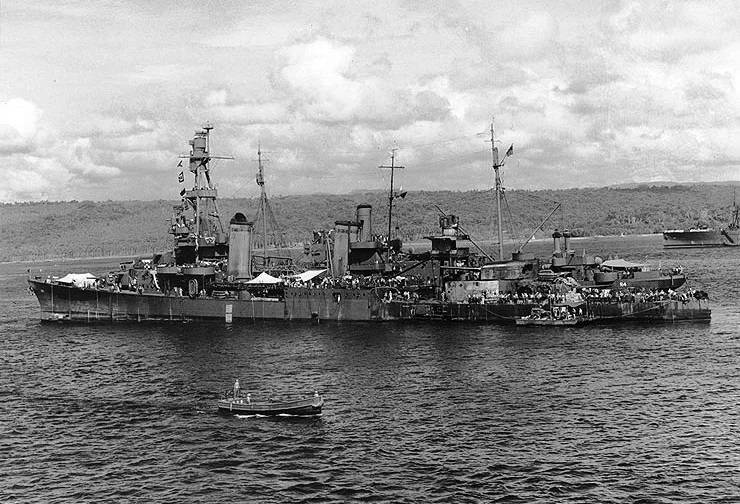
But the crew coped with it, and the ship did not go to the bottom, but under repair, which lasted until October 1943.
From November 1943, the cruiser was increasingly used to support the ground forces. It finally dawned on the admirals that, as an artillery ship, the Pensacola was of greater value than an escort ship.
Maloelap, Vautier, Kwajalein, Majuro, Roy-Namur, Palau, Yap, Uliti and Uleai - this is a list of islands on which the Japanese positions were hit by the 203-mm shells of the cruiser. Until April 1, 1944, the Pensacola took part in many landing operations precisely as a strike ship.
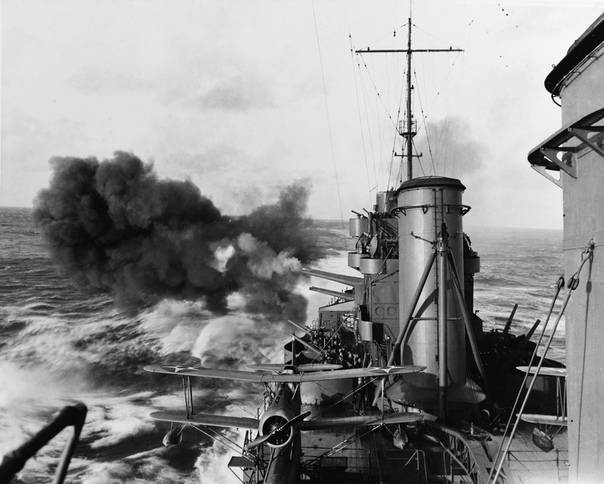
Then the cruiser ended up in the northern part of the Pacific Ocean, where she was engaged in the same work - shelling the Japanese garrisons on the islands of Matsuva, Paramushir, Wake, Markus.
On the night of November 11-12, 1944, during an operation off the island of Iwo Jima, the Pensacola miraculously escaped the attack of the Kaiten torpedo-suicide bomber, who directed his shell at a tanker passing by. Until March 3, Pensacola provided fire support for the landing operation to liberate Iwo Jima and the neighboring islands of Chichijima and Hahajima.
It is believed that it was in the battles for Iwo Jima that Lieutenant Douglas Gandhi shot down the Zero on the Kingfisher. On February 17, 1945, the cruiser was damaged in an artillery duel with a Japanese coastal battery. The ship was hit by 6 shells.
The last battle in the cruiser's career was the Battle of Okinawa. During the war years, the cruiser earned thirteen battle stars from the American command and the nickname "Gray Ghost" from the Japanese side. Salt Lake City, which has been involved in virtually all operations with Pensacola, has earned 11 stars.
After the end of the war, the ships were engaged in the delivery of military contingents to the United States from the Pacific Islands.
On April 29, 1946, the cruisers were designated targets for an atomic bomb test at Bikini Atoll.
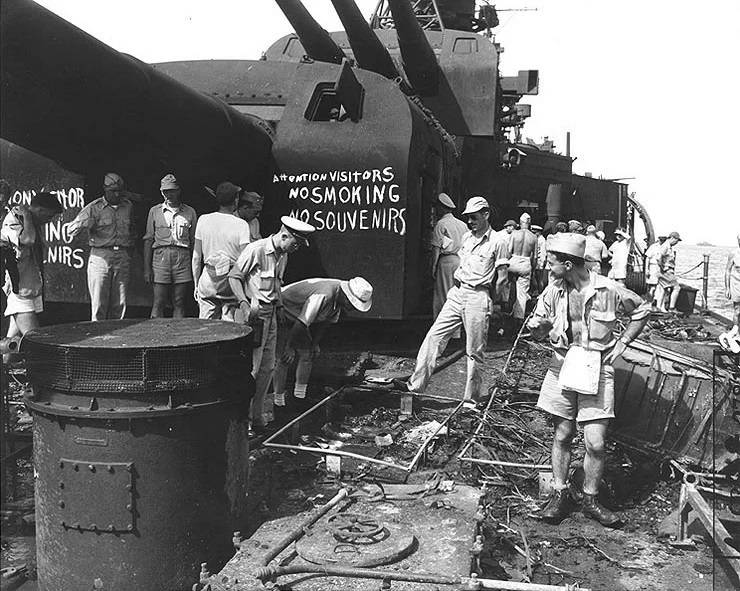
After participating in trials from June 1 to 25, the cruisers were towed to Kwajalein Atoll. After a complex of structural and radiological studies, the ships were withdrawn from the fleet and were used as targets in the US Navy's artillery fire.
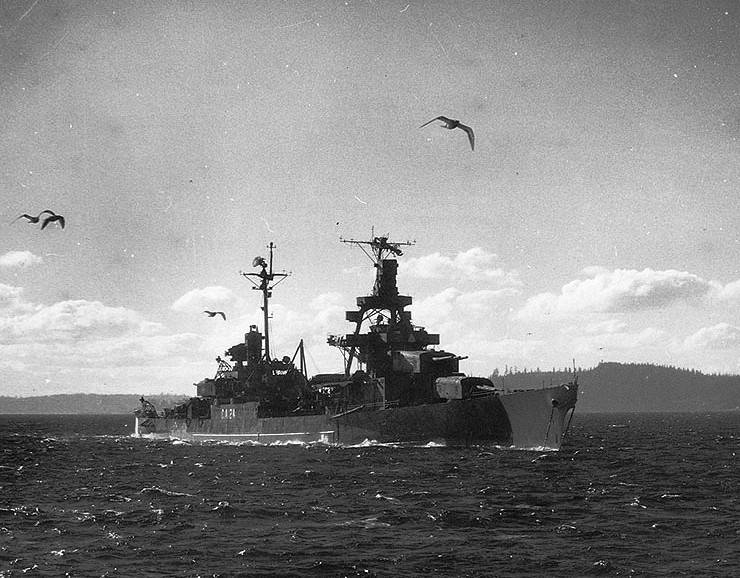
Pensacola and Salt Lake City were sunk by gunfire on November 10, 1948.
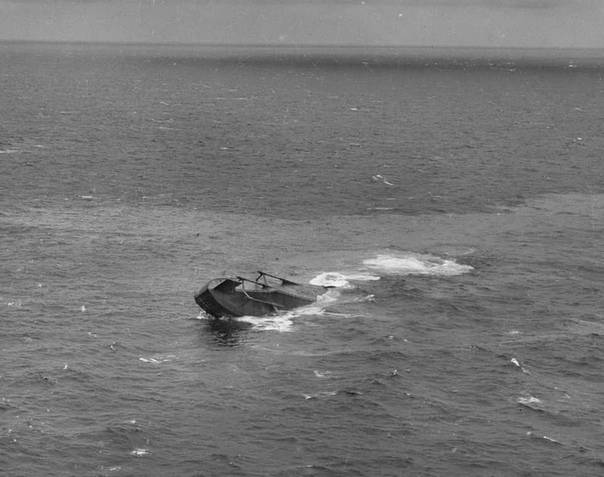
In general, such a controversial end. It is difficult to say which death is "more pleasant" and more honorable for a ship, under the cutters for cutting into metal or under the shells of their former brothers in battles.
As a result.
The Pensacola-class cruiser, unlike many classmates in other countries, turned out to be a really harmonious ship. She was as fast (really, not on paper) as the Italian cruisers. He was well armed, like Japanese ships. It had a good power reserve like the British. The only thing he really didn't have was armor. But you had to pay for the above.
The second drawback is the initially weak anti-aircraft armament. But, as practice has shown, everything can be solved if there is an underload reserve. And, since the ships had an underload initially, it turned out to be as easy to bump "erlikons" and "bofors" as possible, as to remove the "extra" catapult and torpedo tubes.
And the cruisers calmly went through the entire war, "from bell to bell."
I would say that they turned out to be really good ships, despite the fact that usually the first pancake is lumpy. In the case of Pensacola and Salt Lake City, this did not work out.
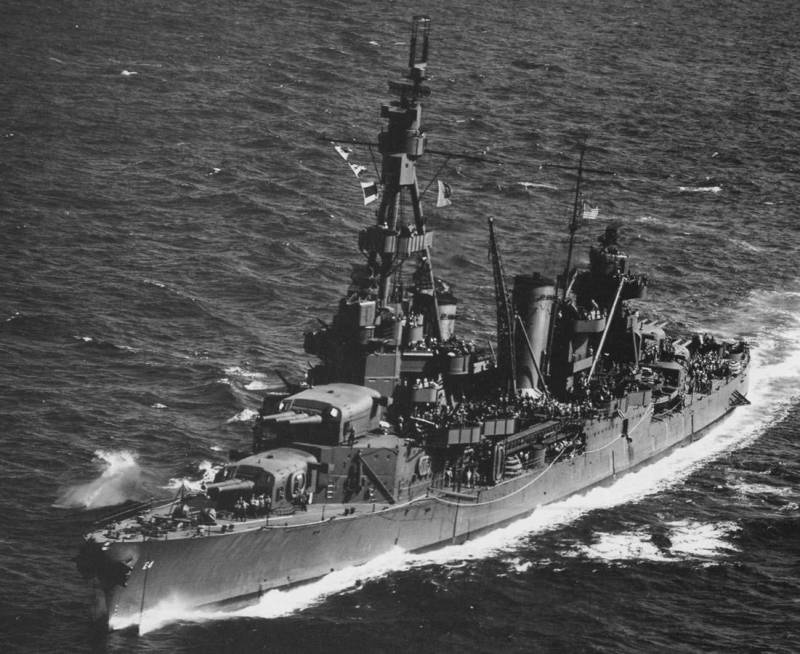
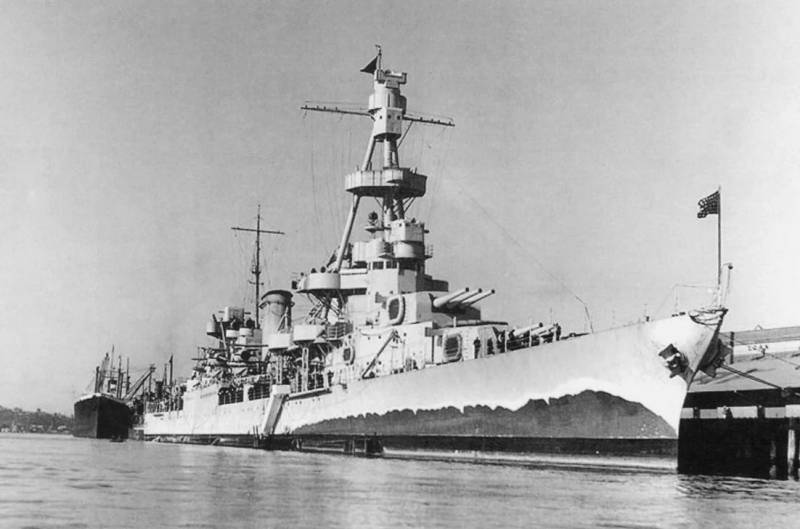
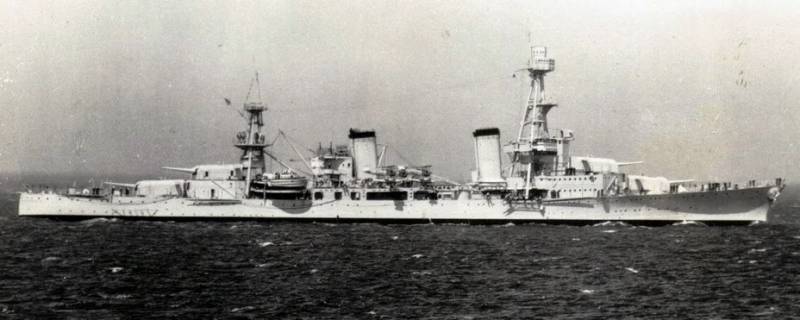
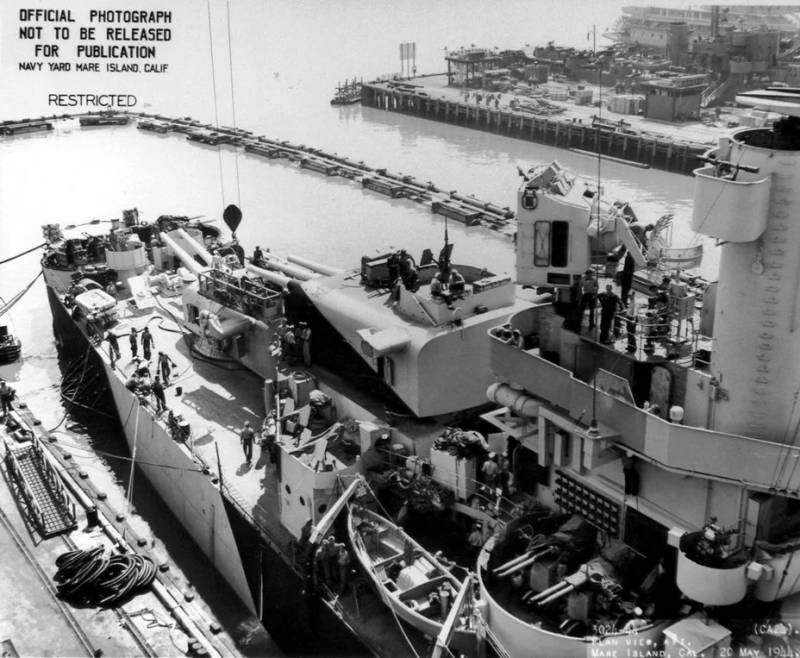
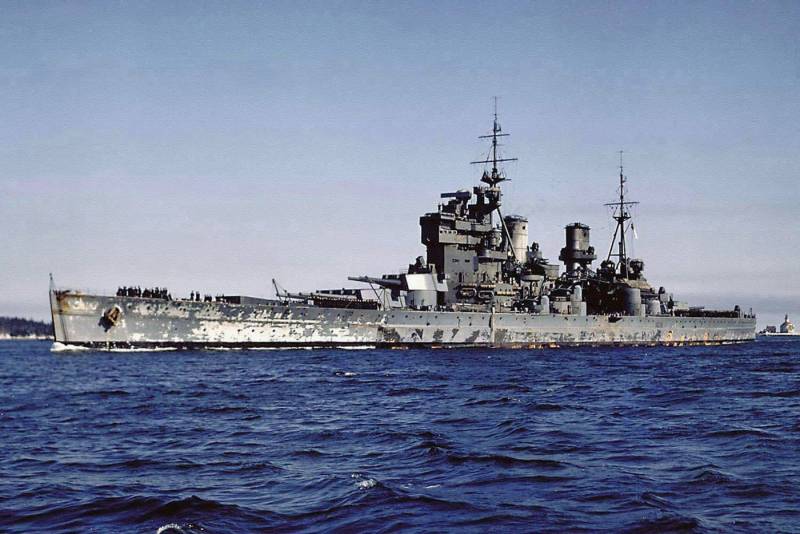
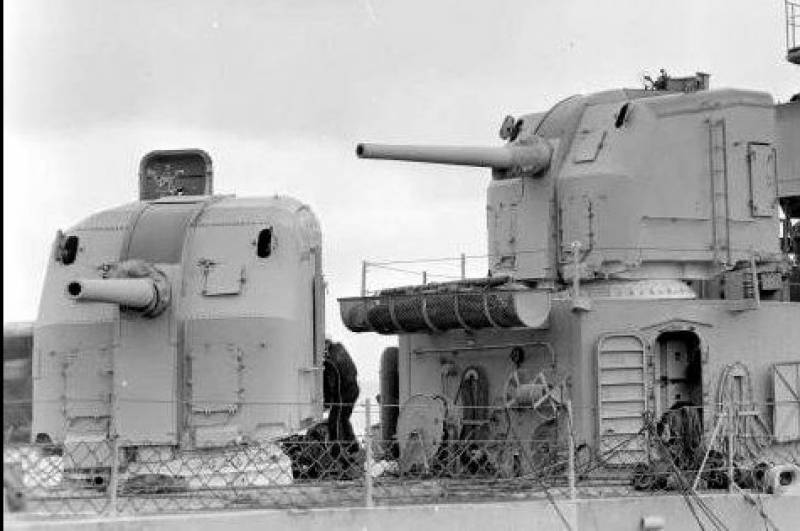
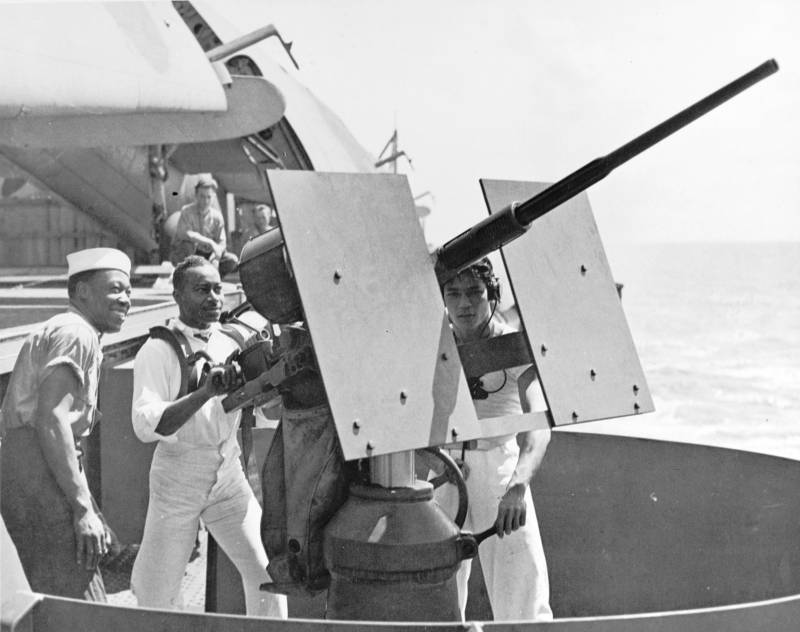
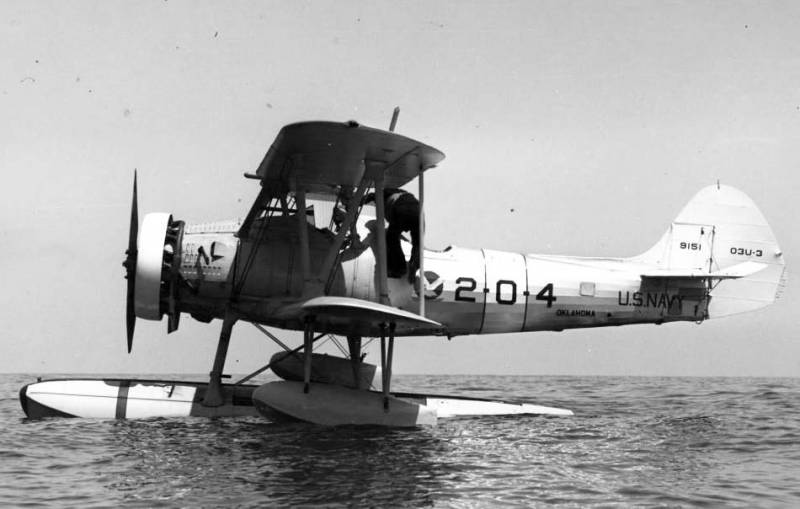
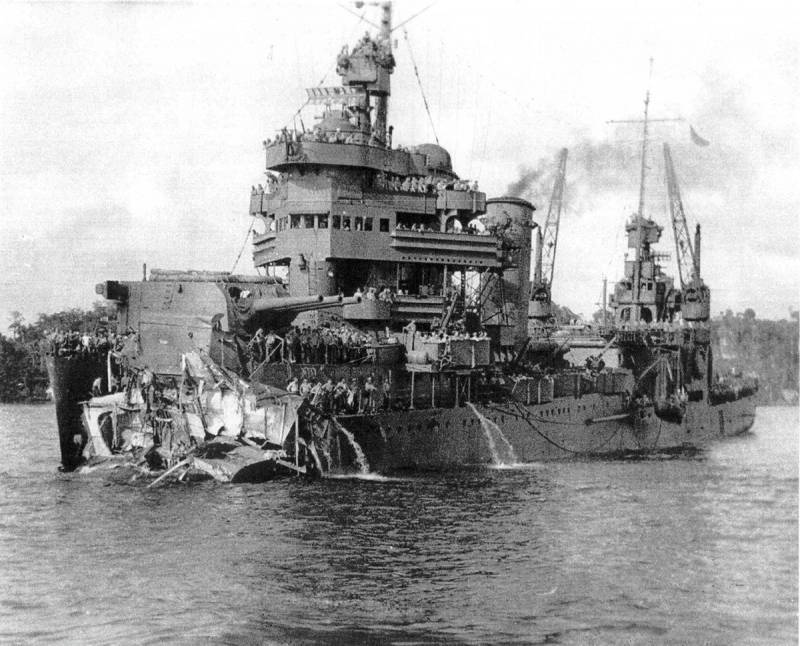
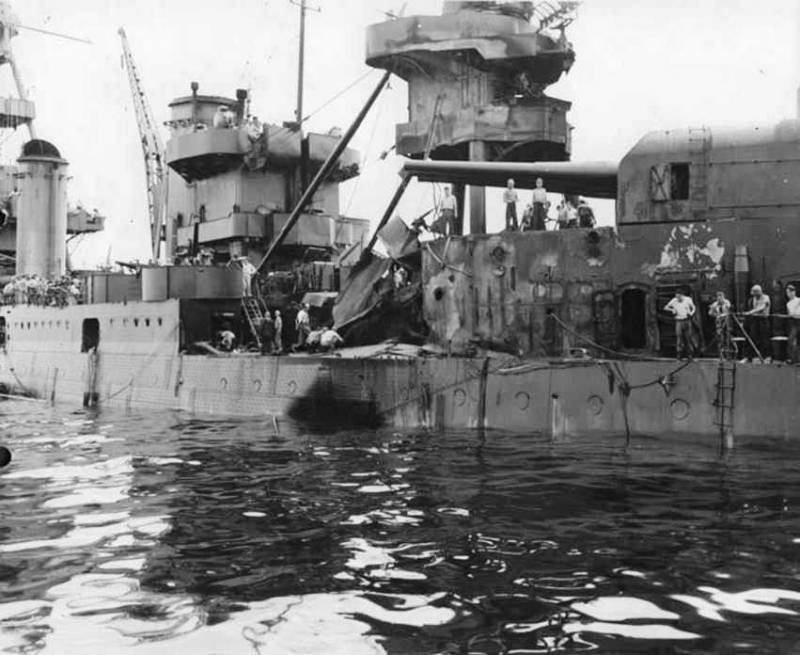
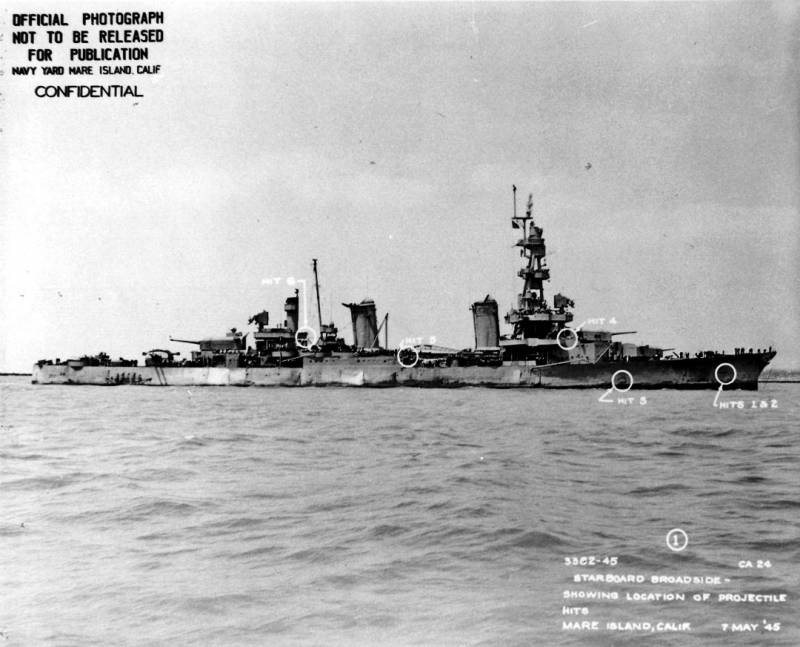
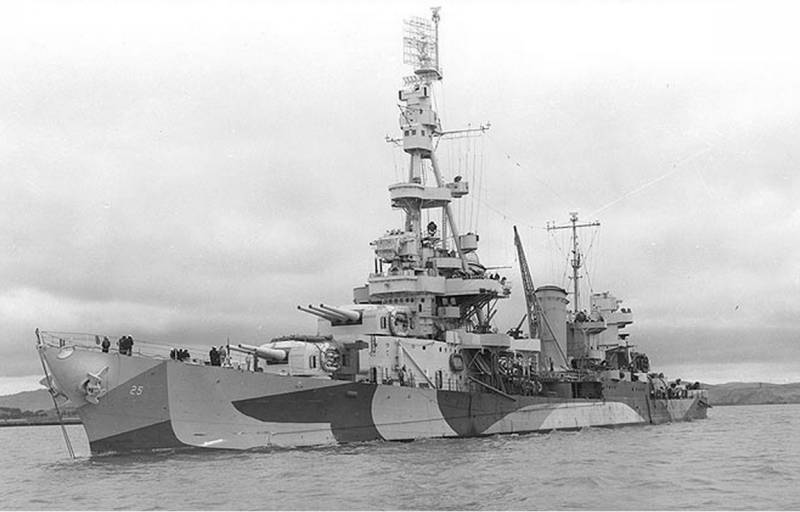
Information